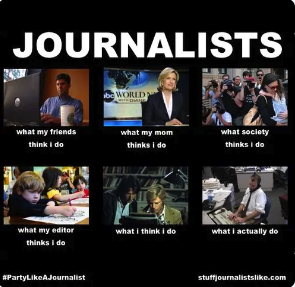The Most Important PR Tip You’ll Ever Read
Having done PR for over 20 years, the key to success in PR is both simple…and difficult.
It’s simple to understand, but difficult to actually execute on a regular basis.
Because through my years of dealing directly with editors and reporters, I’ve come to the conclusion that if you do not follow this tip, most of your PR efforts will be futile.
So here it is. If you want to be successful in PR, you need to think like the press does.
That’s it?
Yup. But trust me, as I mentioned, it is easier said than done.
That’s because we all suffer from “me-itis”.
“Me-itis” is a syndrome where we love to drone on and on about how great our companies are, how wonderful our new products are, and how important our mission statement is.
Me-itis is exacerbated by our social media culture that glorifies putting the spotlight on ourselves. Instagram, TikTok, X (Twitter), Facebook are stuffed full of companies promoting themselves.
But he truth of the matter is, few really cares, least of all the press.
After all, why should they? Their job isn’t advertising, it’s news. And in news, they have to find stories that are newsworthy.
That reporter you’re pitching doesn’t care about you. They don’t care about me. All they care about is, do you have a story that will interest readers.
In this day and age where every month brings more announcements of newsroom layoffs—whether it’s the Los Angeles Times slashing 115 of their journalists, to rounds of layoffs at CNN, The Washington Post, NPR, Vice Media, Sports Illustrated and others—reporters are under immense pressure to deliver.

Here are some ways to think like the press:
Tell a Story
Most pitches to reporters read like a press release, or worse, a product FAQ sheet.
Reporters have to write stories. Therefore, it makes logical sense that in order to be more successful pitching, you have to tell a story to the reporter.
If you read articles, you’ll find that many fit a certain formula.
The article starts with a problem, why the problem is important, who is the problem affecting, and what is being done about it.
Your company might be the “what is being done about it” part.
Use Examples
Most stories you’ll read focuses on a person or a company that is experiencing something significant.
Therefore, your pitches need to include people or companies that were having problems that you helped solved.
Obviously the more well known the example, the better.
But even unknown, smaller examples can be highly effective with the right positioning.
Sprinkle in Data
Reporters love data and statistics, because they help reinforce the credibility of the point you’re trying to make.
There are literally numbers for everything just a Google (or ChatGPT) search away.
Data can be trend (year over year), absolute (size of market), proportional (percentage).
Pro tip: whip up a chart or graph to include for even better results.
Think Twice Before Hitting “Send”
Every time you email an editor or reporter, ask yourself “is this newsworthy”?
If I was an editor or reporter, would I care?
How can this be positioned so it is of maximum interest to the readers of their newspaper, magazine, website or blog?
Is this a topic that really falls within the beat of the reporter? (Read their past articles!)
Be Relevant
Step 4 of Firecracker’s five-step “Ignites” process is called Newsjacking.
Newsjacking is just a fancy schmancy term in the industry that means to be relevant.
There are always hot topics in the news. Your job is to find a way to latch onto whatever is hot.
We wrote an entire in-depth article on how to master the art of newsjacking.
Next time you begin any PR efforts, remember: always think from the press’ point of view.
You’ll find this one tip alone will help you secure much more coverage than you ever dreamed possible.
Contact us today if you’d like to speak to someone about how we can get you PR is a shorter amount of time than you ever thought possible.